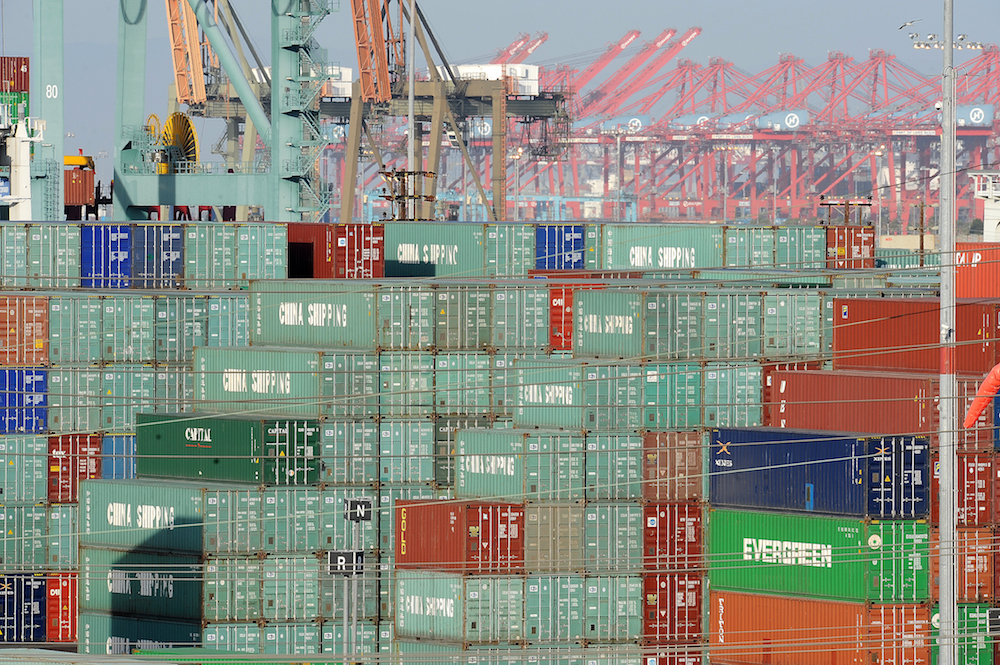Market
To Ease Supply Chain Delays, Christie’s and the Shipping Company Crozier Are Teaming Up to Open New Sea Freight Routes
The partnership will open routes traveling between New York, London, and Hong Kong.

The partnership will open routes traveling between New York, London, and Hong Kong.

Can a new partnership between the auction house Christie’s and the shipping company Crozier help ease the supply-chain woes caused by the pandemic and Russia’s invasion of Ukraine?
Earlier this month, the two art-world heavyweights announced plans for a new monthly sea freight service between London and New York, along with a fleet of bespoke sea containers that will be used exclusively for art. There will also be a sea freight route every two months between London and Hong Kong.
Each shipment will provide Christie’s with 60 percent of the space and the remainder for consolidated Crozier gallery client shipments. It is estimated that the average sailing time for the regular shipments will be 12 days, perhaps making it most appropriate for long-lead art fair planning, or other international events. As an added bonus, sea freight transport promises an 80 percent reduction in emissions compared to air freight.
“The supply chain is broken,” said Fritz Dietl, president of Dietl International Shippers, who also operates a freeport out of Delaware. Air freight costs have quadrupled in some segments of the market, he said, a result of cutbacks in passenger flights in and out of China, which are still nowhere near pre-pandemic levels. He added that the majority of air freight moved around the world takes place on passenger flights as opposed to dedicated cargo flight planes.
One recent shipment, from Shanghai to the U.S., was estimated to cost Dietl $200,000 (while the pre-pandemic rate might have been $60,000 to $70,000). By the time the exhibition closed, the price for that same return shipment had skyrocketed to $600,000.
Meanwhile, ocean freight is also strained, as evidenced by the many images of shipping containers piled up at ports all over the U.S., particularly on the West Coast. “Ships are sitting outside ports, but it’s not just in California,” said Dietl. “It’s extreme on the West Coast but the problems are happening on the East Coast as well.”
To transport works to Venice, Graham Bence, a London-based Crozier director, relies mostly on road freight. He has not had major issues from England (although Brexit has added another layer of administrative and compliance paperwork, he said). But road shipments from other countries have been stymied by the war in Ukraine.
The commissioner of the Kazakhstan Pavilion, Meruyert Kaliyeva, said yesterday that vehicles carrying pavilion freight had to re-route through Georgia, where “understandably, there is a large queue at the Georgian border, which is why a significant amount of our cargo has been delayed. We are hopeful that the installation will be complete by mid-May 2022.”
The Russian invasion of Ukraine has worsened ocean transport as well. Freight lines have been informing some clients of delayed shipments only at the last minute. One container Dietl sent to Venice (via a stop in Genoa) in early February, for example, was first delayed and then sent somewhere near coastal South Carolina, and then rerouted to Tangier, Morocco, since some of the other containers on board had been bound for Russia.
“So then you have to scramble to find either a boat or air freight from Morocco to Italy,” he said. “Luckily we found a boat, but at that point I basically told the client ‘I can’t guarantee that this is going to make it to Venice before the opening.’ That’s not good news. Everything has become complicated and difficult.”